Viburnum acerifolium
A white-flowered viburnum with maple-like leaves
Viburnum acerifolium mapleleaf viburnum
This native deciduous shrub has toothed three-lobed leaves that resemble those of maples, but is unrelated to the maple trees. Instead it belongs to the moshatel family. It grows in sunny or partly shady areas throughout eastern North America. It does best in dry and acidic woodland soil. It requires some degree of shade and is a common understory plant in beech-maple forests.
The leaves are coarsely toothed, downy hairy and have yellow and black dots on the underside. The leaves are 2 to 5 inches long. The twigs are velvety. The plant can grow to a height of six feet.
The small ¼ inch flowers have five petals and occur in a flat to dome-shaped cluster and all are fertile. They have both male and female parts. The cluster can be up to 3 inches across. The blooming period is usually late May or early June. The flowers attract insects including bees and sometimes butterflies. Some moth and beetle larvae feed on the foliage.
The fruit forms in late summer as a red drupe that ripens to bluish-black. Each berry has a single seed. These berries are food for a number of birds and small mammals. Since the seeds are not digested by animals and thus they help with seed distribution. The seeds require a warm-cold temperature sequence in order to germinate. The plant also extensively spreads asexually by rhizome. Mapleleaf viburnum is often cultivated as an ornamental or hedge plant. The leaves turn pastel pink, red or purple in the fall.
Habitat & Range
Common in forests and woodlands.
Present throughout the state.
| EMP: | UPL |
|---|---|
| NCNE: | UPL |
Phenology
Flowers in early June.
Fruits appear in September.
Characteristics
Leaves palmately 3-lobed and coarsely toothed.
Flowers white in 3-5cm wide cymes.
Fruit purple to black.
Plant Codes
S-rank: S5 (Secure)
G-rank: G5 (Secure)
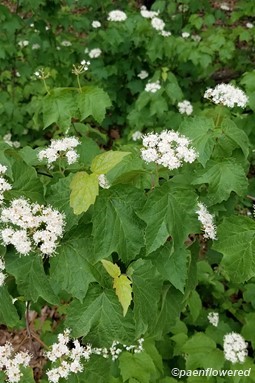
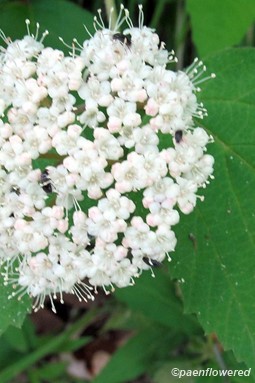
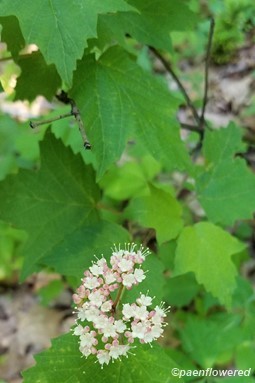
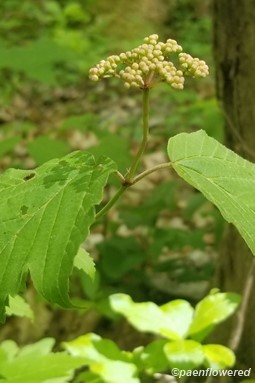
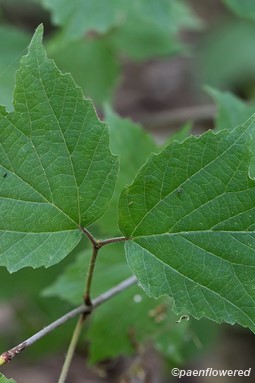
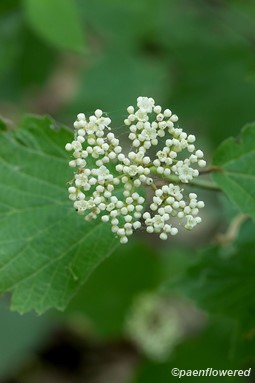
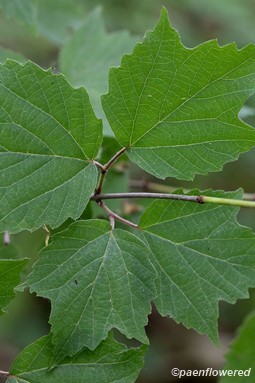
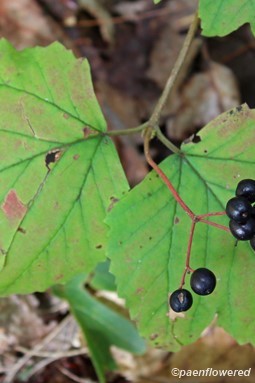













Comments
Have you spotted this plant in your area? We'd love to hear about your experience! Share your comments or questions about the plant below. Comments are moderated before posting.